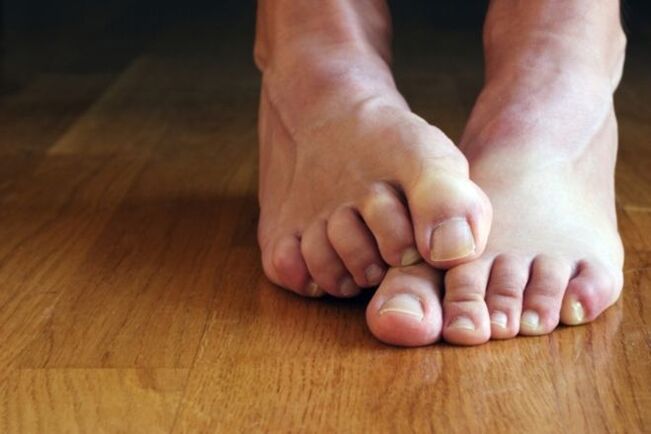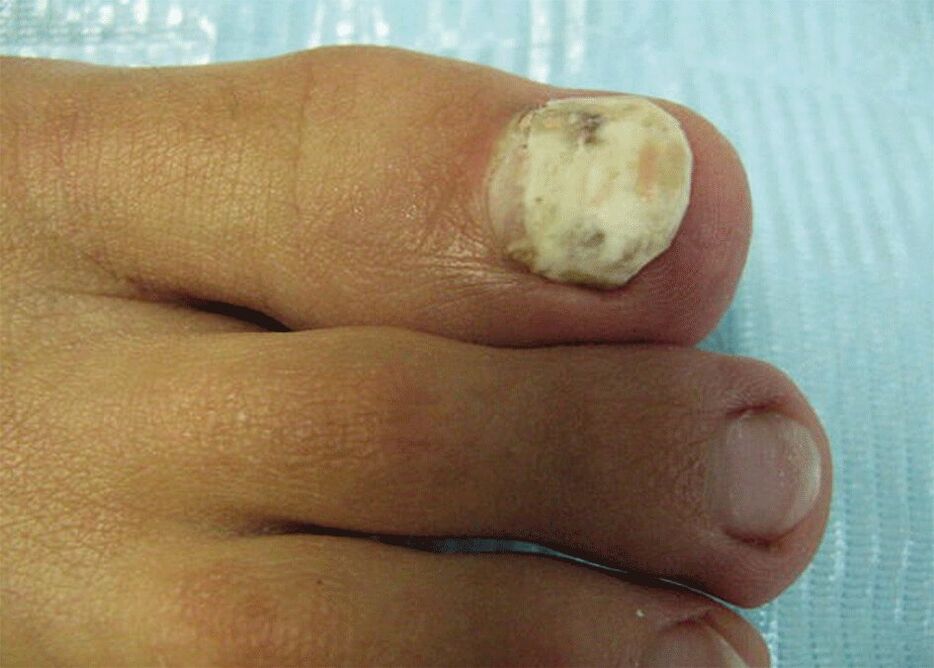Nail fungus is a disease that is difficult to treat, so diagnosing the symptoms in the early stages of the disease will speed up the course of treatment. In addition, when the first signs of the disease are detected, you will be able to protect your family / loved ones from infection, because in most cases (from 70 to 80%) nail and skin fungus is spread between family members.
How symptoms appear

First of all, nail fungus is indicated by an unpleasant odor and itching. If you start to notice that your feet often suspiciously emit an unpleasant smell (with a timely change of socks and proper hygiene), then this is a good reason to see a doctor to diagnose this disease.

The next symptom of the fungus is a change in the color of the nail plate. In this case, nails are damaged more often at the edges. Small furrows and whitish spots appear, which eventually begin to increase in size.

If the appropriate measures are not taken, the plate will continue to change shape and the fungus will damage the new area of the nail until it infects it completely.
Another characteristic symptom of onychomycosis is discoloration of the nail plate. As a result of exposure to fungal spores, it can acquire a variety of colors. In most cases, it is brown and yellow, but when exposed to mold or yeast, it can also acquire a darker color.
Also, one of the signs of the disease is a change in the structure of the nail. It can change shape quickly and begin to collapse.
Other features of this disease
Fungus is a very dangerous disease, because the spores of this infection remain in the human body throughout life and enter the active phase only in a few cases:
- The level of immunity decreases
- diabetes
- Skin disease
- Mechanical damage to the skin of the feet/arms or nails.
Therefore, you should be more careful if you have one of these signs. If you damage your nails at the nail salon or wear tight shoes, then it is advisable to use one of the many antifungal prophylactic agents and apply it to the damaged area no more than once a week.
What to do if you find symptoms of fungus?
- If you find symptoms of onychomycosis, be sure to go to the hospital to see a dermatologist and take the appropriate tests. There are more than 50 types of pathogenic fungi for the human body, and if you start treatment yourself, then with a high probability it will be ineffective and you will lose valuable time.
- After passing all the necessary tests, follow the prescribed prescription exactly and carry out all the procedures to treat the fungus in a timely manner. Remember that folk remedies are better taken
in the complex with antifungal medication, and don't forget to consult your doctor about this.
Everything! These are all actions required of you when you detect the first signs of onychomycosis. Do not try to self-diagnose and, moreover, prescribe treatment.















